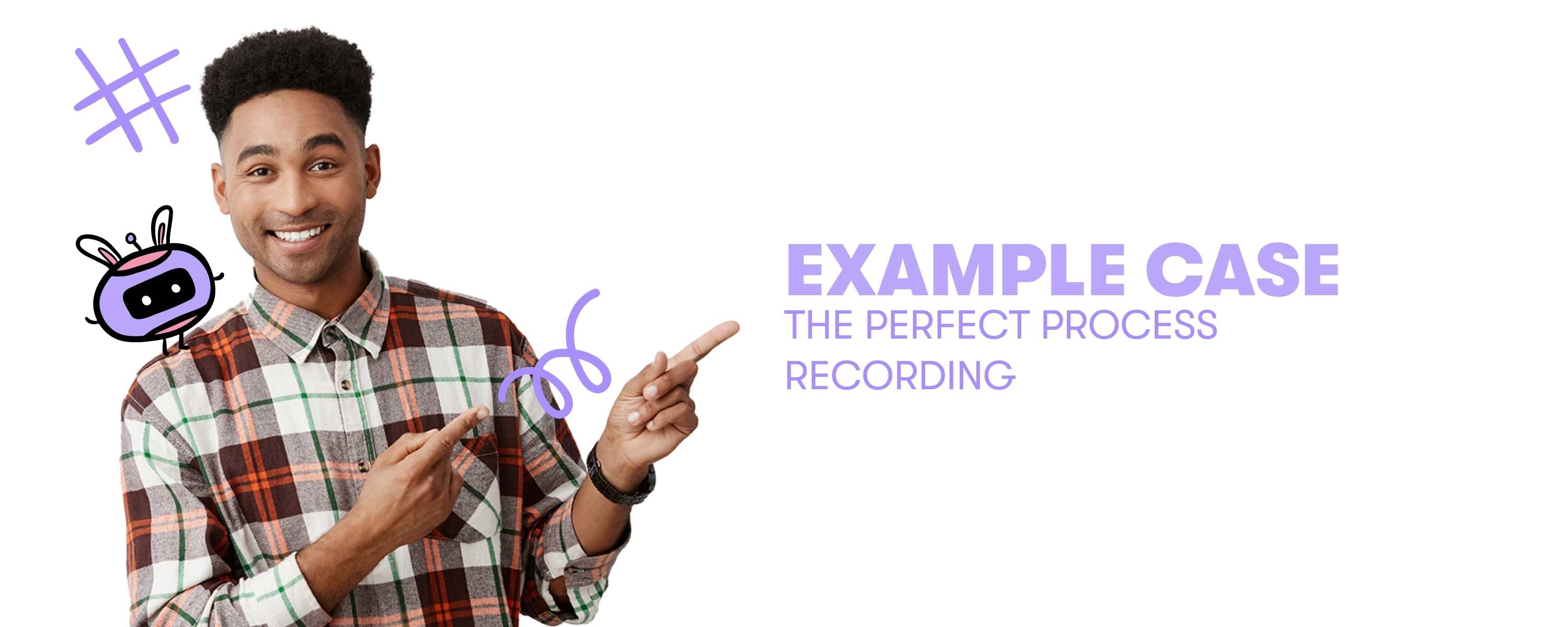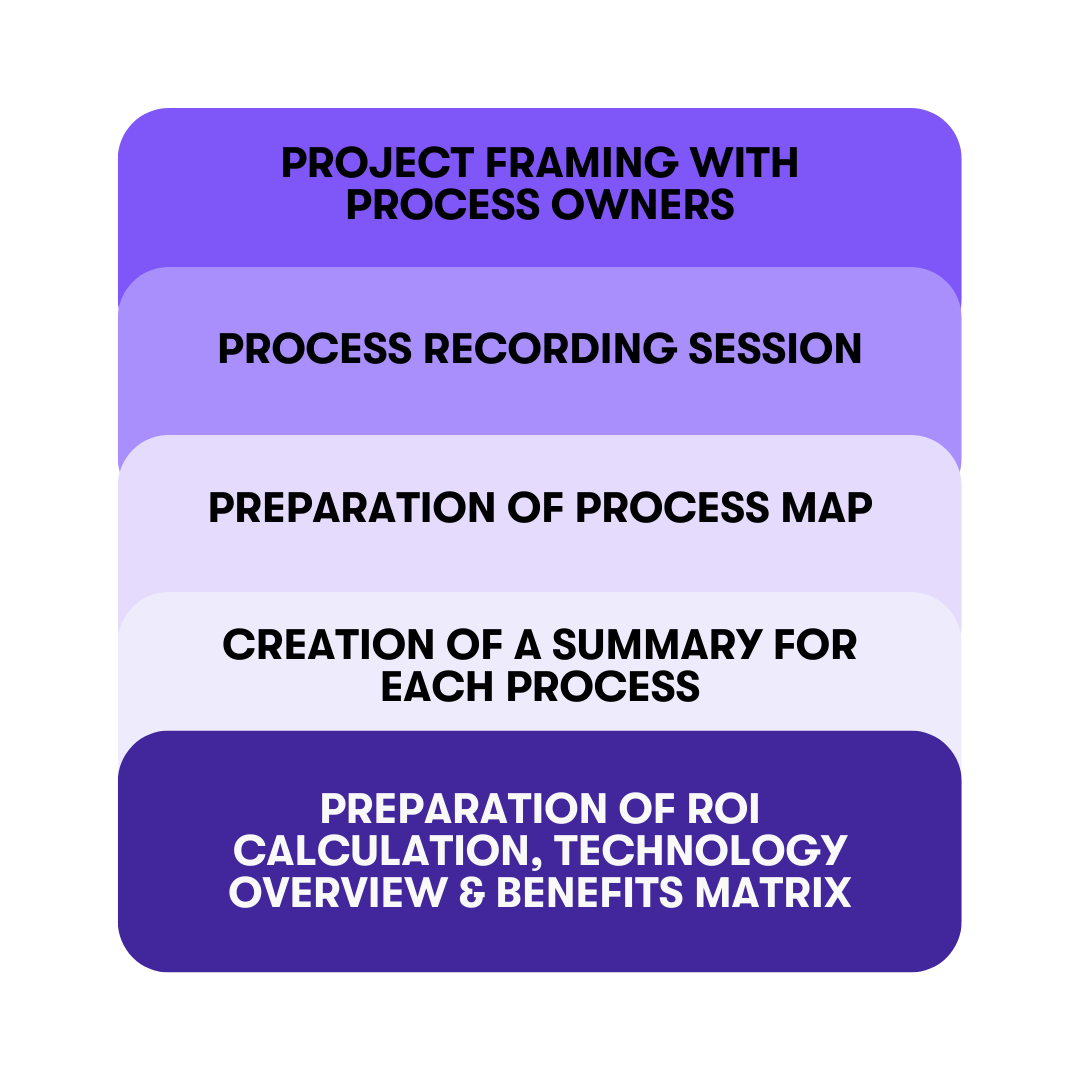Efficient process recording is one of the most underestimated factors in a successful automation strategy. The process of upskilling can still be done manually in the first projects. For a permanently well-filled process pipeline, a combination of upskilling & technology should be considered in any case. In the following sections, we will explain in detail both the manual steps, which are essential for process mapping, and the advanced variant.
The Stage Of The Company Is Decisive
We are big fan of agile methods. Therefore, the means of choice for process mapping depends on the automation stage of the company or department. If the company is still at the very beginning, automation is a relatively unknown topic. If it is in the proof of concept phase, this is an indication that a manual process mapping and the selective creation of awareness for the topic of automation is the right means of choice.
If several processes have already been automated, if the company is already more experienced in dealing with process automation, and if it already has experience in process startup, then the first thing to do should be to continuously fill the process pipeline with high-quality processes.

Concrete Example: Process Start-Up At A Large Management Consulting
The anonymous management consultancy brought along a number of core processes, of which around 15 were ultimately recorded and automated. At the beginning of every process recording, the requirements of the client must be clarified in order to create a common basis. This was also the case in this instance, which is representative of most regular process surveys.
The Company's Criteria:
- Reduction of complexity
- ROI improvement
- Choice of automation technology
- Increase customer satisfaction
- Reducing compliance risks
- Increasing satisfaction among employees
The consultancy was still at the beginning of its automation journey. Therefore, we decided to record the processes manually. For this, we brought a fixed set of questions into the individual sessions with the process owners.
Process Intake Procedure:
- Framing and explanation of the project with process owners
- One-hour process recording session (tip: a recording helps to focus on the questions during the interview and to internalize the process).
- Preparation of a high-level process map
- Creation of a summary for each process (contents: Process description, input data, involved stakeholders, duration of execution, frequency, consumed time for the process per year).
- Preparation of an ROI calculation, technology overview and benefits matrix

On the basis of this evaluation, the responsible department was able to gain a good overview of which processes are suitable for automation and where the respective advantages lie. Subsequently, a so-called PDD (Process Design Document) was created, which served as a basis for the developers to implement the automation in a promising way.
This sample process describes the manual variant for companies that are just starting out with the topic of process automation. We also want to give an overview of what is necessary to scale the process recording process in order to create a filled process pipeline.

Upskilling & Technology in Process Uptake
A crowded process pipeline is one of the biggest pain points for many companies beyond the proof of concept phase. We believe that automation of this intake process is important. In our view, a significantly underestimated point is to create an understanding of good processes among the responsible process owners. The understanding of these process owners is essential to ensure a quality, well-filled pipeline. Even a perfectly automated process of process recording must be fed with input from the process owners.
When considering how to obtain this information, which is necessary to gain a detailed understanding of the process, there are several options:
- Special software offers for process recording
- Combinations of forms, emails, Excel & an iPaaS solution (e.g. with Make or Power Automate).
- Own company app (e.g. with Appsheet or PowerApps from Microsoft)
When scaling, the combination of upskilling the process owner and an efficient automated process is crucial for success. Training to become an Automation Agent or even a further training to become an Automation Strategist can already work wonders here and ensure a well-functioning and continuous automation of company processes and thus perfection of these.









